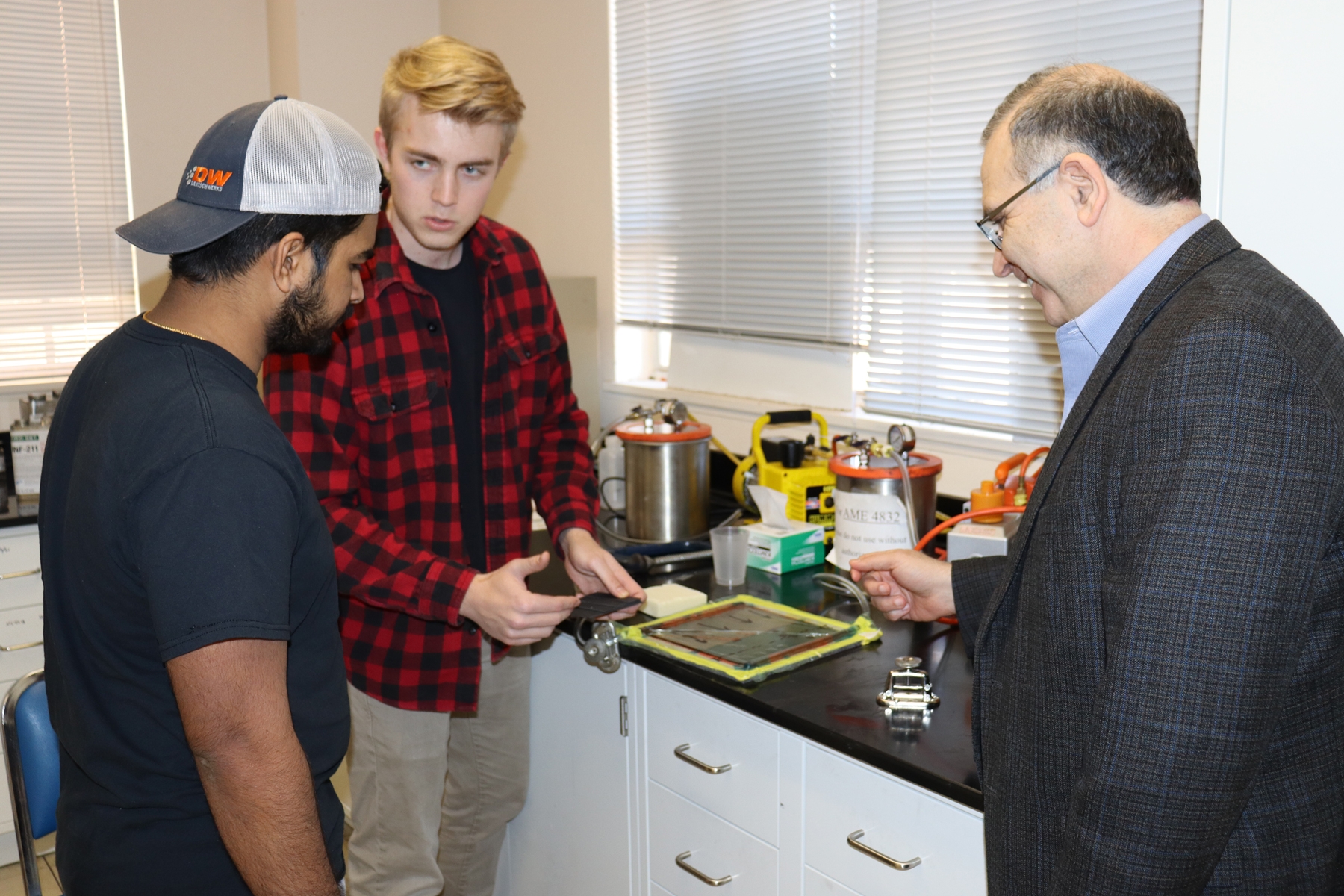A research team, coordinated by the Oklahoma Aerospace and Defense Innovation Institute at the University of Oklahoma, is conducting a comprehensive review and assessment of current methods to inspect critical structural components of U.S. Air Force aircraft and equipment.
The Oklahoma City Air Logistics Complex at Tinker Air Force Base is responsible for maintenance, repair and overhaul support for a diverse portfolio of aircraft and weapon systems. One of the ways in which OC-ALC personnel inspect aircraft and equipment is through analysis techniques to evaluate the properties of a material, component, or system without causing damage, called nondestructive inspection.
Engineers at the University of Oklahoma are partnering with the OC-ALC to assess the efficiency and efficacy of current NDI techniques, and to explore emerging NDI methods that could be used to improve accuracy and effectiveness of these inspections.
M. Cengiz Altan, Ph.D., the Perkinson Chair and President's Associates Presidential Professor of Aerospace and Mechanical Engineering in the Gallogly College of Engineering leads the project with fellow engineering professor and co-principal investigator Mrinal C. Saha, Ph.D. San Tran the branch chief of the Aircraft Structure and Inspections Branch, and James Miller, NDI Level III, are supporting the project for the OC-ALC.
“The effectiveness of the NDI systems is often dependent on the damage or defect type being sought as well as the kind of part being inspected, including the part’s material, geometry and fabrication details,” Altan said. “Hence, we are reviewing enhanced NDI methods suitable for composite laminates, metal or synthetic honeycomb or foam core structures such as nose, side or tail radomes (a structural, weatherproof enclosure that protects a radar antenna) and adhesively bonded metal assemblies like flight control surfaces.”
Following their assessment, the researchers will provide recommendations on the suitability and implementation of these methods. Likewise, they will survey emerging NDI technologies and investigate their viability for OC-ALC needs.
“For example, a promising but not yet commercialized NDI method is to leverage the effects of microstructural damage and defects on the polymer-water interaction,” Saha said. “This approach would be ideal to detect surface, or near surface, microcracks that are not visible and could not be easily detected by conventional approaches.”
The research project is one of six in support of Air Force sustainment and modernization with the OC-ALC, coordinated through the Oklahoma Aerospace and Defense Innovation Institute. OADII brings together the university’s capabilities and resources with a network of industry and government partners to make significant impact on sustainment and modernization of U.S. defense, radar innovations, advanced technologies, and international security policy.


